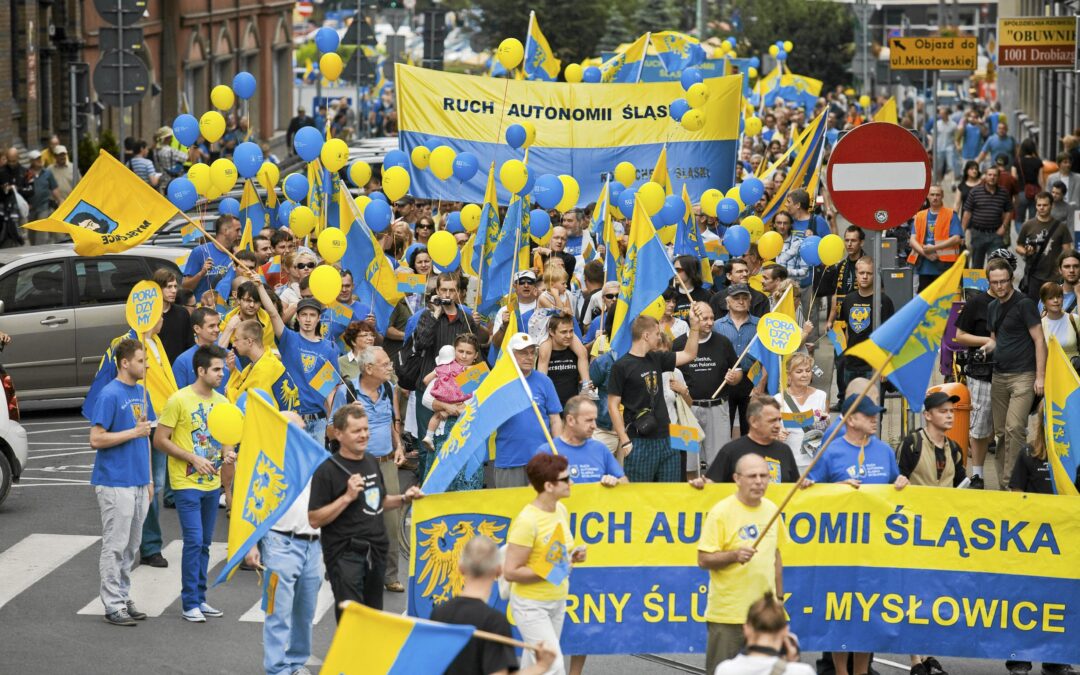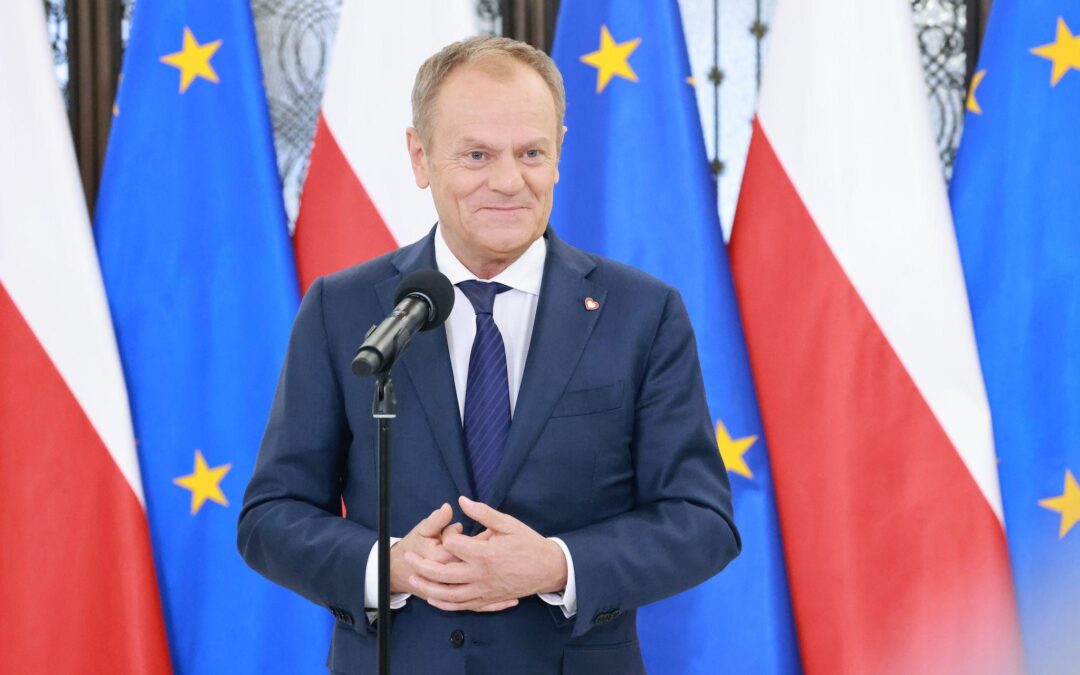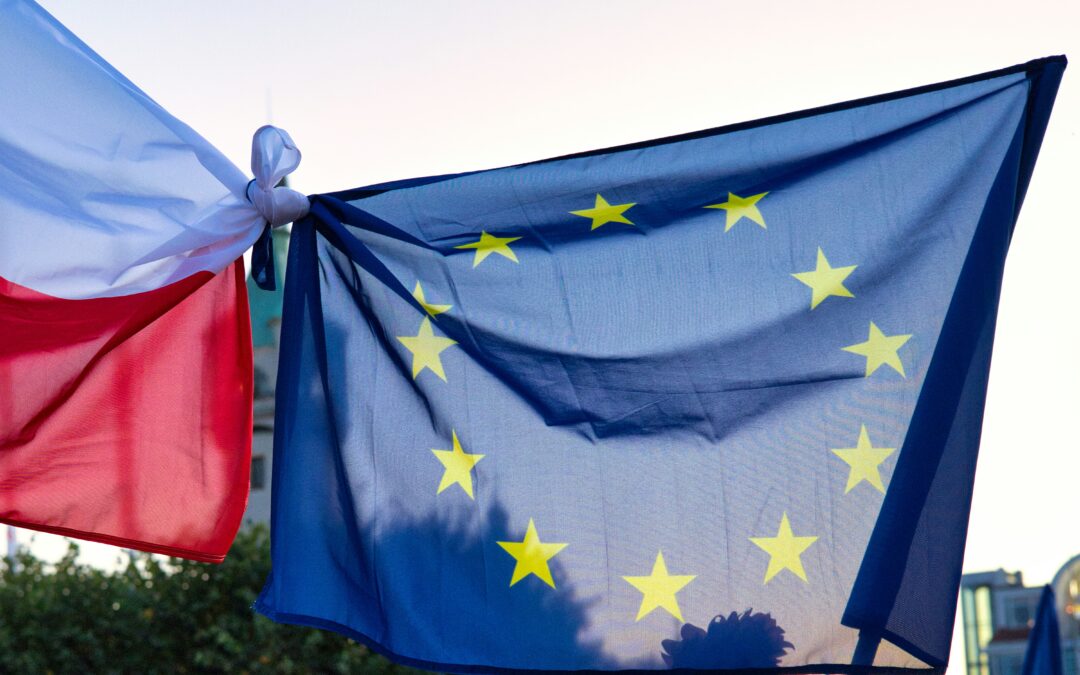The latest release of data from Poland’s 2021 census shows how the country’s various ethnic and national groups have changed in size over the last decade. They also show that English has become the most commonly spoken language in people’s homes apart from Polish.
Poland’s largest indigenous ethnic minorities – Silesians and Kashubians – have seen their numbers decline significantly, though some activists and experts claim that this is because the new online census made it more difficult for people to select such identities.
Among Poland’s other traditional ethnic groups, the largest increases were recorded by Jews – whose numbers more than doubled, though remain small – and Ukrainians.
Meanwhile, there were also large rises in those holding English and Irish as their secondary identities – whose numbers quintupled – perhaps as a result of returning Polish emigres and their families.
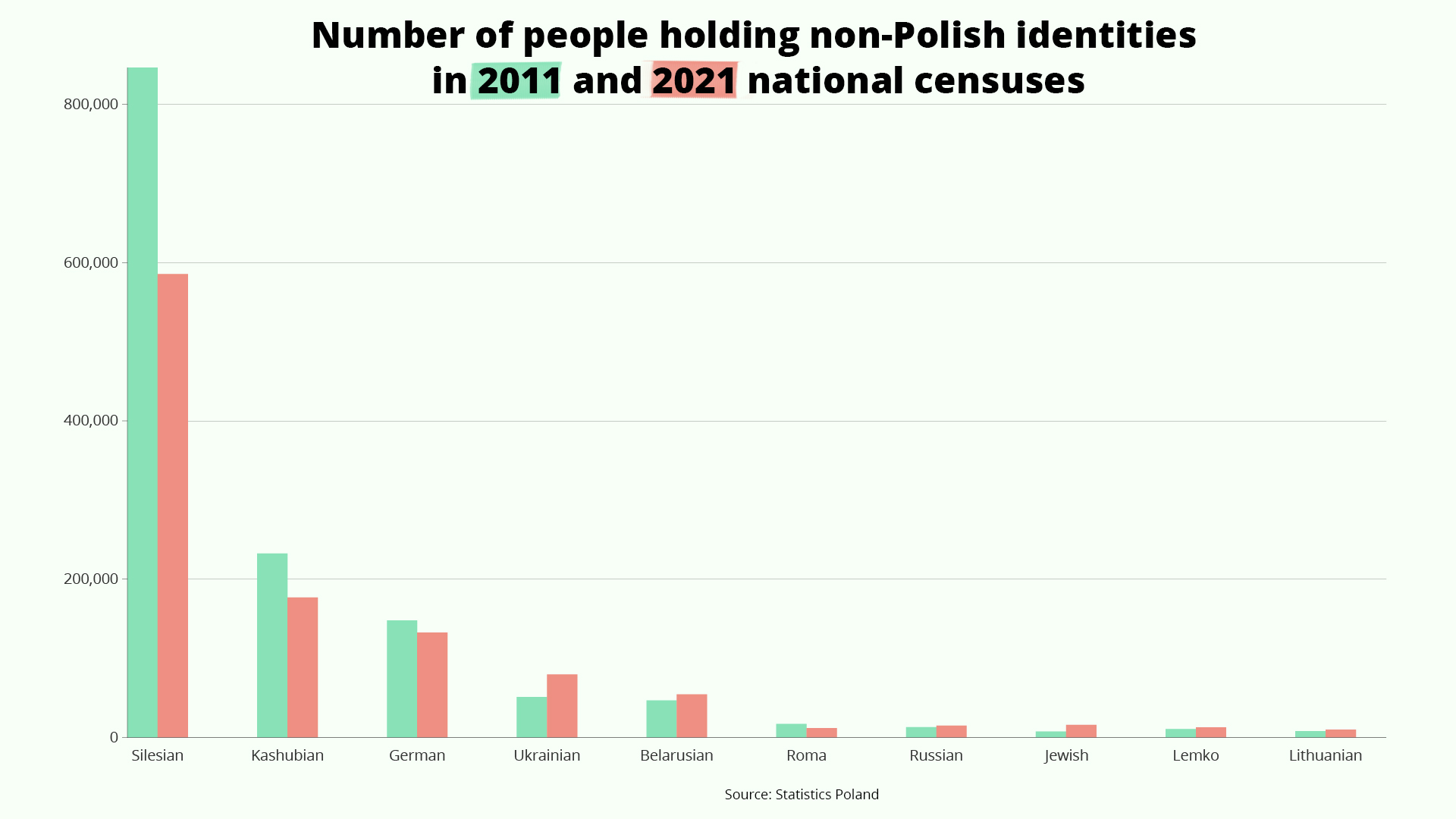
The preliminary and partial new data on identity and language use was released this week by Statistics Poland (GUS), a state agency. It shows that among Poland’s population of just over 38 million people, the overwhelming majority, 97.6%, declare Polish as their primary (97.4%) or secondary (0.2%) identity.
However, there were also 1.3 million people (3.5% of the population) who declared a different nationality or ethnicity as their primary (1.3%) or secondary (2.3%) identity.
Among those, the most numerous were Silesians (585,700 in total) and Kashubians (176,900), ethnic groups that are indigenous to Poland’s southwest and north respectively.
Both those numbers have declined significantly since the 2011 census – when there were 846,700 Silesians and 232,500 Kashubians – despite efforts by activists to encourage members of ethnic minorities to declare their identity in the 2021 census.
Activists in Silesia are appealing for people in the region to declare Silesian as their identity in this year's census (as 847,000 did in 2011) and to say they speak Silesian.
They hope to boost the ethnolect's case for official recognition as a language https://t.co/FeI5gfklrZ
— Notes from Poland 🇵🇱 (@notesfrompoland) January 14, 2021
One possible reason for this, according to Małgorzata Myśliwiec, a professor of political science at the University of Silesia in Katowice, is that the online system used in 2021 made it harder for people to identify themselves as members of ethnic minorities.
“The fact that over half a million citizens living in Silesia took the trouble to fight the census system, find the right column and enter the right ethnicity is a success of this group that clearly emphasises and manifests its distinctiveness,” Myśliwiec told the Polish Press Agency (PAP).
Nicole Ketzler, a resident of the village of Cisek in Silesia, told news outlet OKO.press that, despite working on a computer every day, she struggled to find the “Silesian” option in the online census form. “What were the elderly supposed to do?” she asked.
A game show has faced complaints from one of Poland’s ethnic groups, the Kashubs, for describing their language as a dialect
They have demanded that state broadcaster TVP issue a correction informing viewers that Kashubian is a legally recognised language https://t.co/37i9V5UrB1
— Notes from Poland 🇵🇱 (@notesfrompoland) December 28, 2020
The third largest of Poland’s traditional ethnic groups remained Germans, of whom there were 132,500 in 2021, a similar figure to 2011.
The number identifying as Ukrainian increased from 51,000 to 79,400 (though that does not include the majority of the million or so Ukrainian immigrants in Poland at the time of the census, mostly on temporary work and residence permits).
Meanwhile, the number identifying as ethnically Jewish more than doubled from 7,500 in 2011 to 15,700 in 2021. The last decade has seen growing numbers of Poles discovering long-hidden Jewish roots, but also migration to Poland of Jews from abroad.
However, the numbers remain tiny compared to the three million Jews that lived in Poland before the Holocaust.
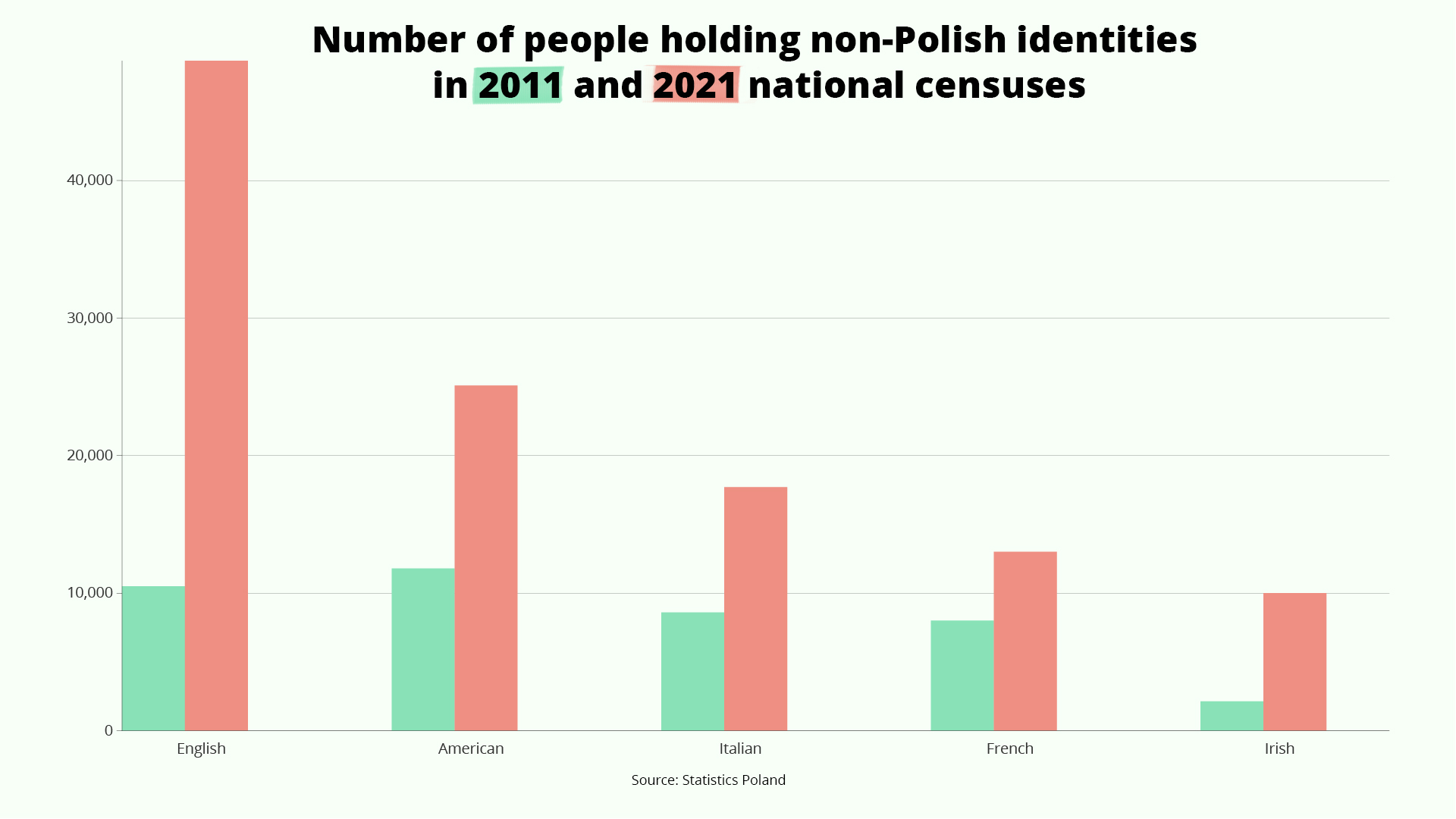
Among national groups not traditionally native to Poland, the numbers of those identifying as English or Irish quintupled between 2011 and 2021: from 10,500 to 48,700 in the case of the English, and from 2,100 to 10,000 for the Irish.
However, in both cases, over 90% of those people named English or Irish as their secondary identity. That may indicate that much of the rise is associated with previous Polish emigrants to the UK and Ireland – which have been major destinations for Poles, especially since 2004 – and their families returning to Poland.
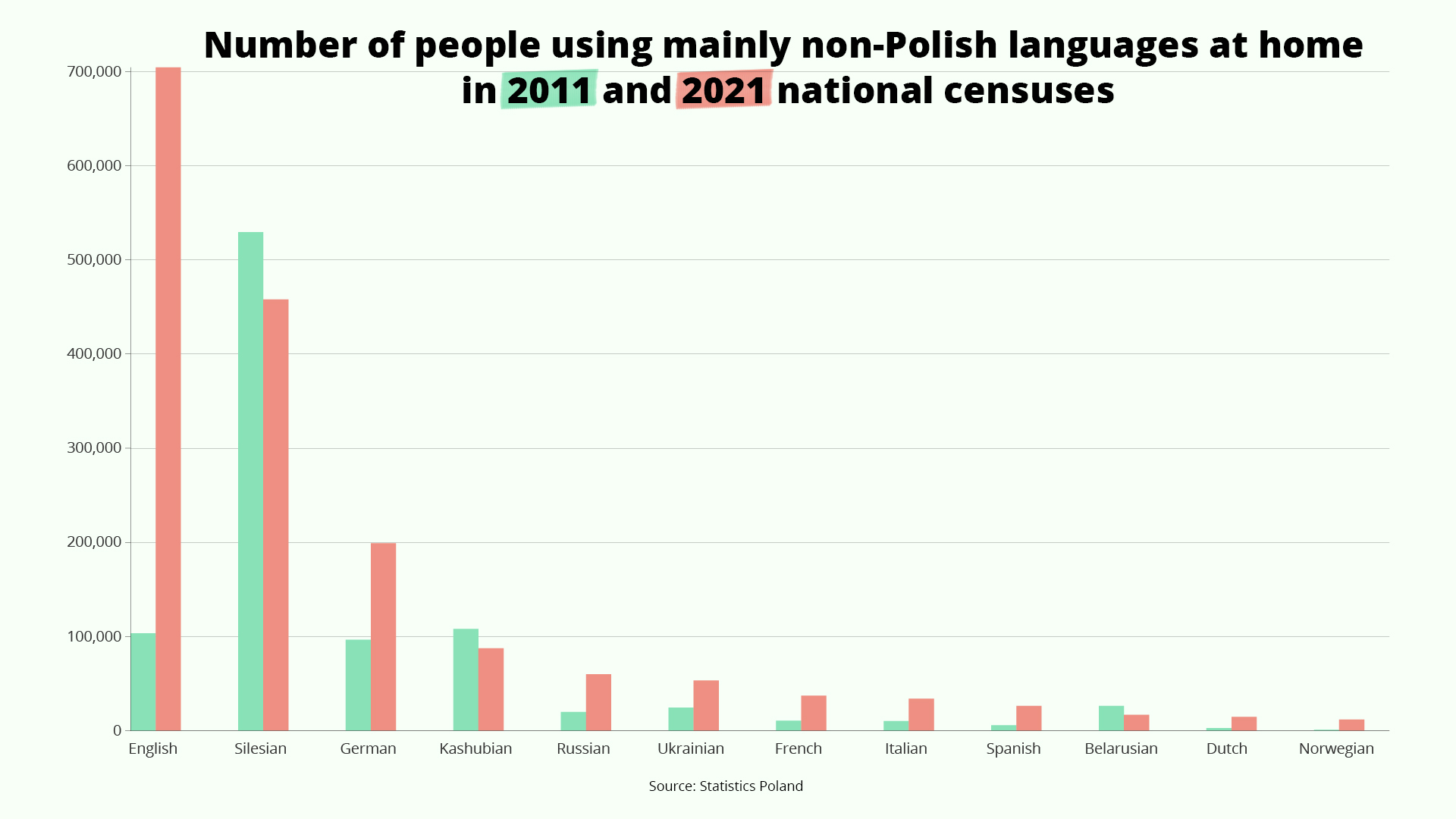
The new census data also show that English has overtaken Silesian as the most commonly spoken language in people’s homes after Polish (which is the main language used at home by 98% of people in Poland).
In 2011, English was the main language used at home by 103,500 people, but by 2021 that had risen to 704,400. Users of Silesian (which many regard as a language, but some claim is a dialect) at home fell from 529,400 to 457,900 over that period, and Kashubian from 108,100 to 87,600.
That resulted in Kashubian being overtaken as the third most commonly used language by German, which more than doubled from 96,500 to 199,000. While Poland has a long-established German minority, that significant rise is likely to have been due to migration from Germany.
Signs in Polish and Silesian have been installed in two Kaufland supermarkets in Silesia.
According to the author of the translations, this proves that Silesian – classified as an ethnolect, not a language – is a living communication toolhttps://t.co/8L4ubjeGUO
— Notes from Poland 🇵🇱 (@notesfrompoland) December 28, 2022
Meanwhile, the number of Russian and Ukrainian speakers also more than doubled (to 59,900 and 53,200 respectively), likely as a result of immigration from Ukraine, where many people use Russian as their main language.
There were also very large relative rises in the number of people speaking French, Italian, Spanish, Dutch and Norwegian at home, though the overall numbers remains small.
As with English, that may reflect the return of Polish emigres and their families from those countries. But there has also been growing migration to Poland in recent years of people from western and southern Europe.
The number of immigrants from other EU countries resident in Poland has almost tripled in a decade.
Many have come from Spain, Italy and Portugal, saying that Poland offers better employment opportunities and quality of life https://t.co/4va4HpXZ0t
— Notes from Poland 🇵🇱 (@notesfrompoland) July 1, 2020
Main image credit: BARTLOMIEJ BARCZYK / Agencja Wyborcza.pl

Daniel Tilles is editor-in-chief of Notes from Poland. He has written on Polish affairs for a wide range of publications, including Foreign Policy, POLITICO Europe, EUobserver and Dziennik Gazeta Prawna.
